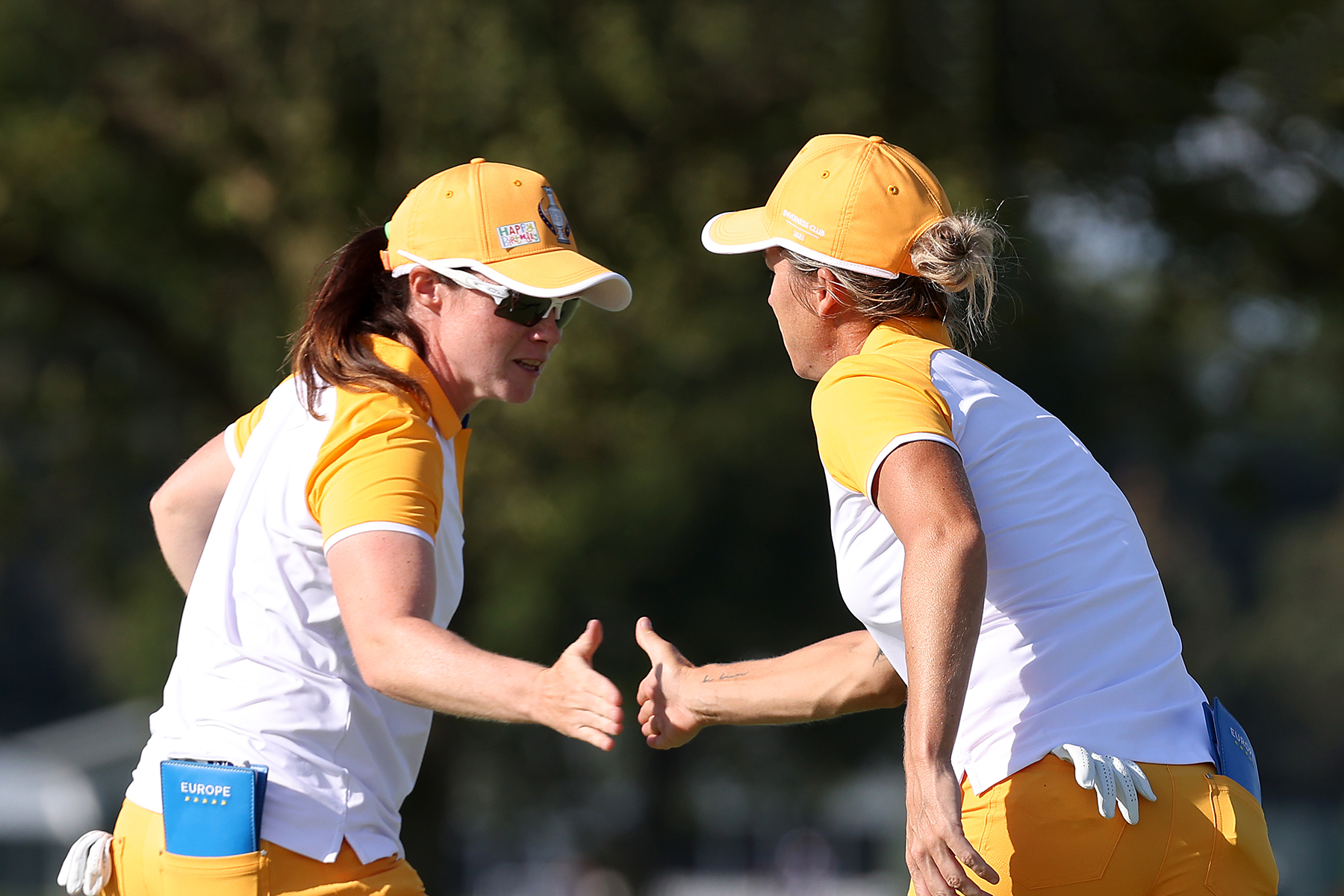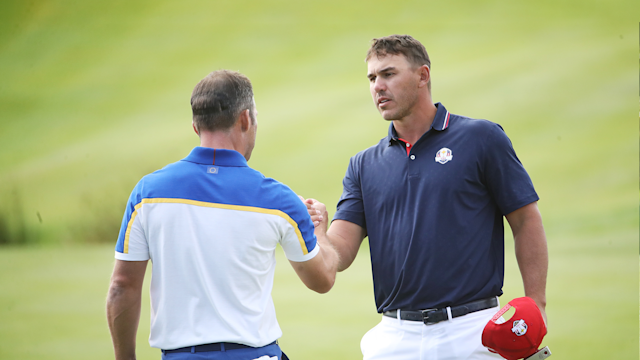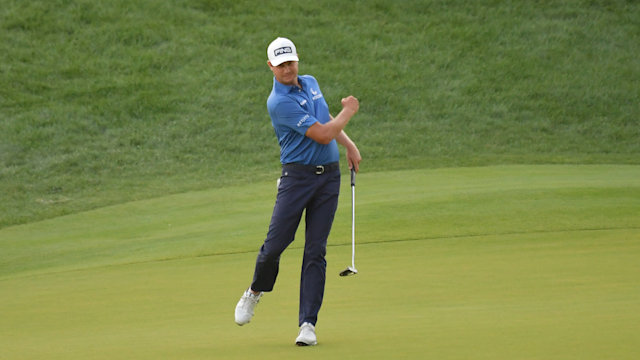quick coaching
Making Putts Under Pressure in Match Play Takes More than a Great Stroke
By Keith Stewart, PGA
Published on

Mel Reid of Team Europe and Leona Maguire of Team Europe react on the 16th hole during the Fourball Match on day two of the Solheim Cup at the Inverness Club on September 05, 2021 in Toledo, Ohio. (Photo by Gregory Shamus/Getty Images)
Editor's Note: In anticipation of the 43rd Ryder Cup at Whistling Straits, PGA.com will be taking deep dive into Match Play throughout the month of September. From Match Play tips and strategies to stories from local players and everything in between, be sure to come back all month long to get ready for the biennial event.
How can we learn to make more putts under pressure? After watching the Solheim Cup this weekend there’s definitely a couple keys the US Ryder Cup team (and you) can follow. Once the “matches” are complete the most common quote we hear is the winning team has made all the putts. Well, that is the case, but how did they do it? Or better yet, what did the losing players do when they were putting that caused them to miss?
The skill of putting is taught by PGA Coaches nationwide every day. Alongside the physical stroke, these same coaches spend countless hours helping players of all skill levels handle the performance challenges players face on the putting green. In that time, they have learned a couple key performance factors proven to help you make more putts when the pressure intensifies.
1. Don’t Change
Ever notice how when a player really needs to make a putt, they seem to miss the hole? You can go back and look at the recap videos from this past weekend. Don’t change your routine or speed just because it is match play and you need to make it. Too many players fall into this trap and just a little focus can stop it.
For example, if you like to die your putts into the hole. Don’t change your pace. Changing speed modifies the line you need. If you’re not used to reading greens at a faster putting speed, than you’re going to read it wrong and miss. Being consistent means being comfortable. And comfortable people make more putts.
2. Be Cool
Pressure filled moments will increase your pulse. If it’s a club event you might find yourself playing in front of spectators for the first time. When the atmosphere gets heightened, don’t allow yourself to change your emotional state. Maintain your walking pace, length of routine and most of all be cool.
During this weekend’s competition it was obvious who could handle their emotions throughout the matches and who was looking for a way out. To be cool, recognize your situation is different and that you are involved in an exciting moment. Then calm down. Ignoring the atmosphere will only make you more anxious. Accept and then act. Follow those two steps and you’ll perform more like you usually do.
3. One at a Time
Flipping a coin has two results. What happens when we flip a coin 10 times and all 10 land on heads? We begin to believe we can’t stop heads from showing up. Truth is that every flip there’s always a 50% chance one side shows. Putting is the same way. From three feet we either make it or miss it, there’s a 50% chance.
Putts happen one at a time. The more you believe this you realize a previous putt cannot affect the outcome of your current putt. Many will argue there’s a mental influence, but that’s my point. You must treat every putt as if they happen one at a time, and you will make more putts.
Having a short memory, controlling your emotions, and staying consistent takes practice. All players have slight differences in their stroke, stance, and approach, but these performance factors will positively help everyone.
This is the most important coaching point. Make sure you rehearse these three items each time you practice and play with your flatstick. Get better prepared because when the moment comes these 3 Keys will make pressure your partner and not your adversary.
Keith Stewart is a 5-time award-winning PGA Professional with 25 years of experience in the golf industry. His network of players, coaches and insiders provide him with a unique perspective on the game. He's a writer on PGA.com and host of the ProShow on ESPN 920 AM Friday afternoons at 3:00pm EDT. Check out his PGA Coaching articles archived here or his conversations on air with this link to his website The ProShow.



